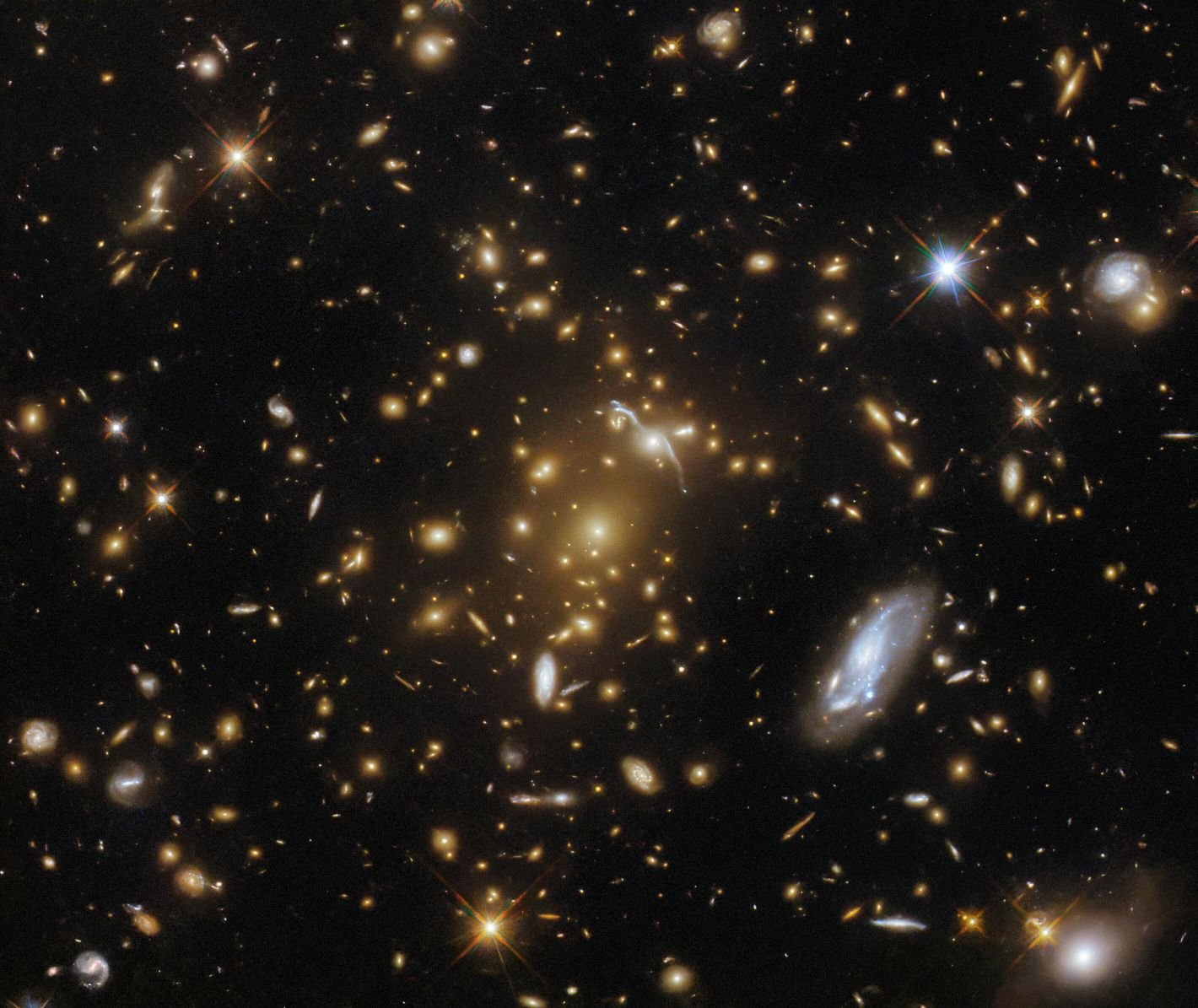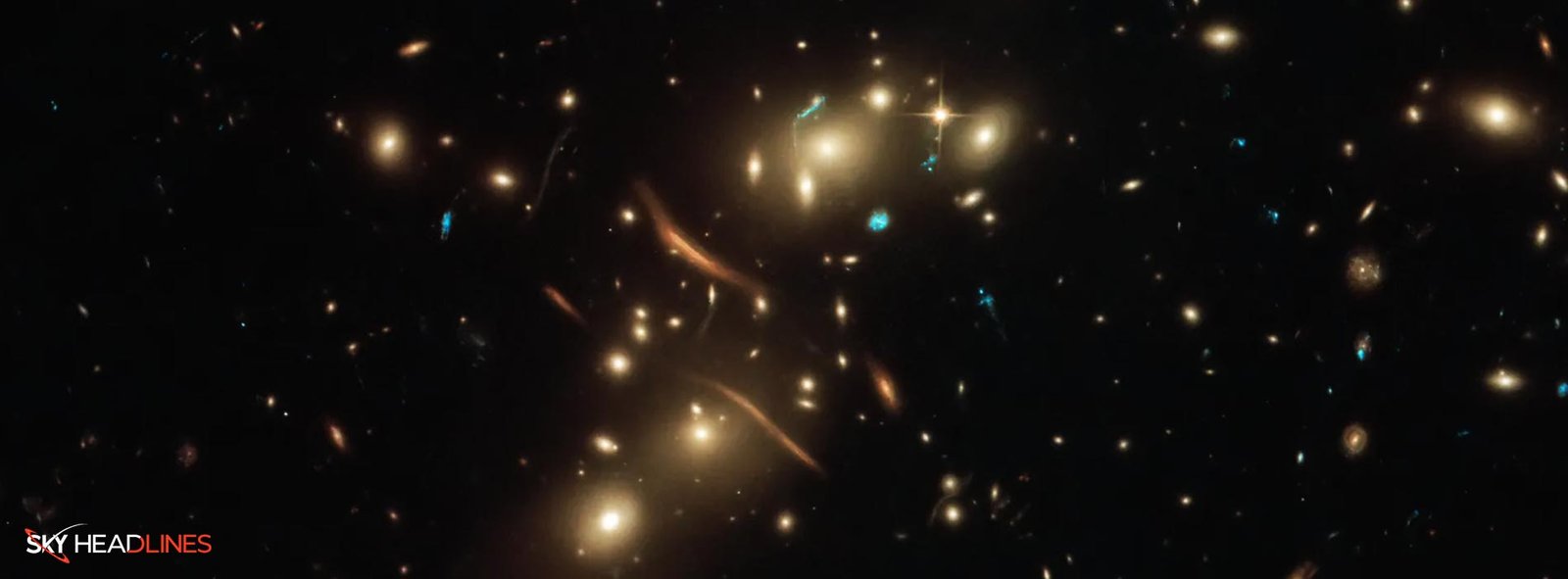In the center of this photograph taken by the NASA/ESA Hubble Space Telescope lies a massive galaxy cluster. This huge cosmic creature can be detected by looking at the ripples it creates in spacetime. It’s like a sea monster swimming beneath the surface of the ocean. The cluster is so big that it bends the light from faraway galaxies, making them look different. This image shows twisted lines and curves of light. The cluster is surrounded by many other galaxies, and there are a few stars in the foreground that have diffraction spikes.

What is the significance of eMACS J1823.1+7822?
The galaxy cluster eMACS J1823.1+7822 is located in the Draco constellation and is almost nine billion light-years away. Hubble studied five really big galaxy clusters to measure how strong their gravitational lenses are. This helps us understand where dark matter is in these clusters.
How can gravitational lenses help astronomers study faraway galaxies?
Gravitational lenses, such as eMACS J1823.1+7822, can help astronomers study faraway galaxies. These lenses act like giant telescopes, making faint or distant objects appear bigger and clearer.
What instruments were used to capture the image of the galaxy cluster and how do they work?
This picture combines information from eight filters and two instruments: Hubble’s Advanced Camera for Surveys and Wide Field Camera 3. Both instruments can see space objects by using filters that capture specific wavelengths of light. This helps astronomers take pictures of objects at precise wavelengths. Astronomers use different types of observations to get a better understanding of an object’s structure, composition, and behavior. This helps them see more than what visible light alone can show.





